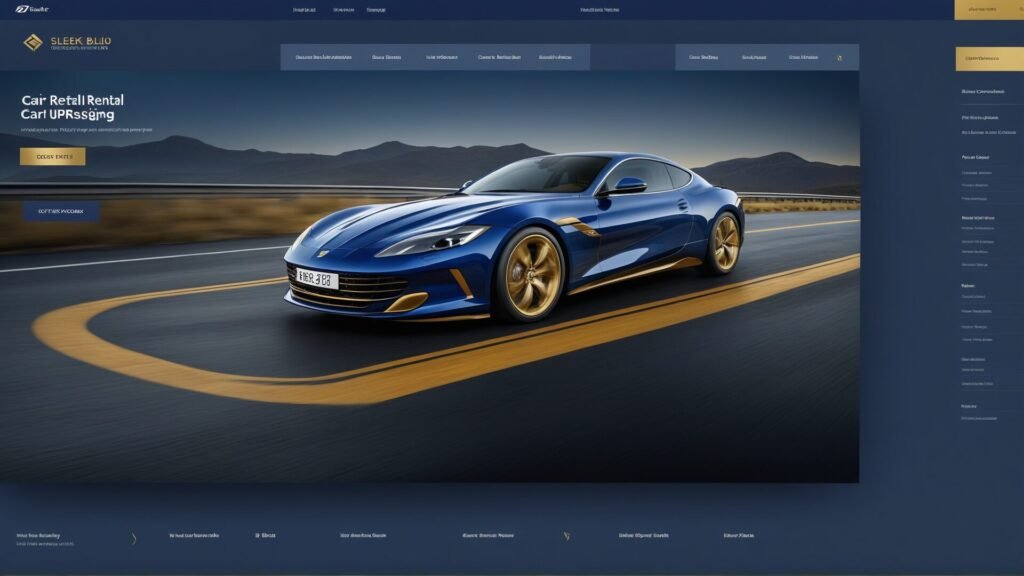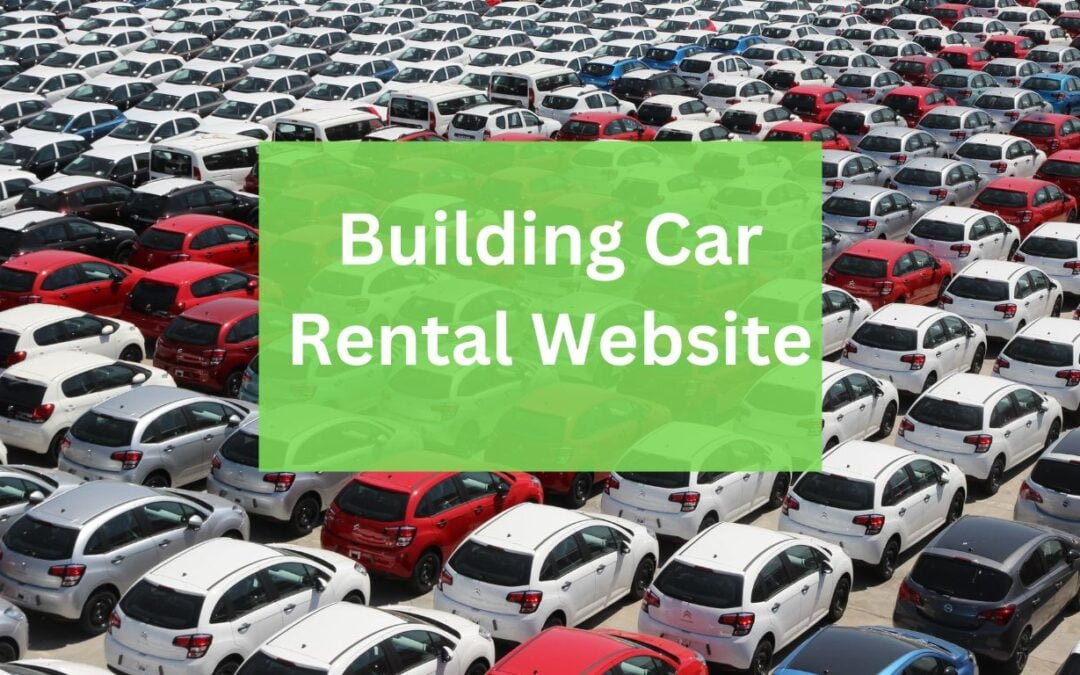Building Car Rental Website ,In today’s fast-paced world, having access to a vehicle is more than just a convenience—it’s often a necessity. Whether you’re a business traveler or planning a weekend getaway, renting a car can be a practical solution. But how do you go about building a car rental website that stands out in the crowded online marketplace? In this article, we’ll take you through the process, from initial planning to launch, and ensure that your website not only attracts visitors but also converts them into loyal customers.
Building a car rental website might seem like a daunting task, but it’s much like assembling a puzzle. Each piece—whether it’s design, functionality, or content—plays a crucial role in creating a cohesive and engaging experience for your users. In this guide, we’ll walk you through each step, offering practical advice and insights to help you build a successful online car rental platform.
Planning Your Car Rental Website
Before diving into the technical aspects, it’s essential to lay a solid foundation. Think of this phase as the blueprint for your website.
Define Your Goals
What do you want to achieve with your car rental website? Are you targeting a specific demographic, or are you offering unique vehicles? Defining your goals will help you focus your efforts and resources.
Identify Your Target Audience
Understanding your audience is key to tailoring your website to meet their needs. Are they business travelers, vacationers, or locals looking for a weekend rental? Knowing this will influence your design and content choices.
Market Research
Investigate your competitors and the industry. What are they doing well, and where can you improve? This research will help you identify gaps in the market and offer unique selling points.
Choosing the Right Domain and Hosting
Your domain name is your website’s address on the internet. It should be memorable, easy to spell, and relevant to your business. Once you’ve chosen a domain, you’ll need a reliable hosting provider to ensure your website is always accessible.
Domain Name Tips
- Keep it short and simple.
- Use relevant keywords like “car rental” or “hire.”
- Avoid numbers and hyphens.
Choosing a Hosting Provider
Look for a provider that offers excellent uptime, security features, and customer support. Your hosting plan should also be scalable to accommodate your website’s growth.
Designing a User-Friendly Interface
Your website’s design should be visually appealing and intuitive. A well-designed interface can make or break the user experience.
Navigation
Ensure that your website’s navigation is straightforward. Users should be able to find information and complete tasks without confusion.
Visual Design
Use a clean and professional design that reflects your brand. High-quality images and consistent color schemes can make your website more attractive.
Key Features to Include
A car rental website needs specific features to function effectively. Let’s explore the essentials.
Vehicle Listings
Display your available vehicles with detailed descriptions, photos, and pricing. Make it easy for users to filter and search for the perfect car.
User Accounts
Allow users to create accounts to save their preferences, bookings, and payment information.
Payment Gateway Integration
Offer secure and convenient payment options, including credit cards, PayPal, and other popular methods.
Integrating a Booking System
A robust booking system is the backbone of a car rental website. It should be user-friendly and efficient.
Real-Time Availability
Ensure that users can see real-time availability for all vehicles. This feature reduces the risk of double bookings and enhances user satisfaction.
Booking Confirmation
Provide instant booking confirmation via email or SMS. This reassures users that their reservation is secure.
SEO Optimization Strategies
Search engine optimization (SEO) is crucial for driving organic traffic to your website. By optimizing your site, you can improve its visibility on search engines.
Keyword Research
Identify relevant keywords like “car rental,” “hire a car,” and “affordable rentals.” Use these keywords naturally throughout your content.
On-Page SEO
Optimize your meta titles, descriptions, and headers. Include keywords in these elements to improve your search engine rankings.
Content Creation
Create high-quality content, such as blog posts and guides, that provide value to your users. This content can help you rank for additional keywords and attract more visitors.
Mobile Responsiveness
In an age where most people browse the web on their phones, your website must be mobile-friendly. A responsive design ensures that your site looks and functions well on all devices.
Responsive Design Tips
- Use flexible grids and layouts.
- Optimize images for faster loading times.
- Test your website on various devices to ensure compatibility.
Security and Privacy Considerations
Security is a top priority for any website, especially one handling sensitive customer information. Implementing robust security measures protects your business and builds trust with your users.
SSL Certificates
An SSL certificate encrypts data between your website and its users, ensuring secure transactions. It also boosts your SEO rankings.
Data Privacy
Comply with data privacy laws, such as GDPR, to protect user information. Clearly outline your privacy policy and data handling practices.
Testing and Launching
Before launching your website, thoroughly test all features and functionalities. A smooth, bug-free experience is crucial for user satisfaction.
Usability Testing
Conduct usability testing with real users to identify potential issues. Gather feedback and make necessary improvements.
Soft Launch
Consider a soft launch to a limited audience. This approach allows you to catch any last-minute issues before going live.
Marketing Your Car Rental Website
Once your website is live, the work isn’t over. Effective marketing strategies are essential to attract visitors and convert them into customers.
Social Media Marketing
Leverage social media platforms to promote your services. Engage with users and share valuable content.
Email Marketing
Build an email list and send newsletters with special offers, updates, and tips. Email marketing is an effective way to retain customers.
PPC Advertising
Invest in pay-per-click (PPC) advertising to drive targeted traffic to your website. This strategy can yield quick results and increase bookings.
Conclusion
Building a car rental website involves many steps, but with careful planning and execution, you can create a platform that meets the needs of your target audience. From choosing the right domain and hosting to designing a user-friendly interface and implementing essential features, every aspect plays a crucial role in the success of your website. Remember, a well-optimized site not only attracts visitors but also converts them into loyal customers.

FAQs
1. What are the essential features of a car rental website?
A car rental website should include vehicle listings, a booking system, secure payment options, user accounts, and real-time availability.
2. How can I make my car rental website user-friendly?
Focus on intuitive navigation, a clean design, and easy access to essential features. A responsive design is also crucial for mobile users.
3. Why is SEO important for a car rental website?
SEO helps improve your website’s visibility on search engines, driving organic traffic and increasing bookings.
4. What payment methods should I offer on my car rental website?
Offer a variety of secure payment options, including credit cards, PayPal, and other popular methods.
5. How can I ensure my car rental website is secure?
Implement SSL certificates, comply with data privacy laws, and regularly update your security measures to protect user information.
Building a successful car rental website requires careful planning, firstly because you need to identify your target audience. Additionally, it’s crucial to incorporate user-friendly design elements that make navigation intuitive. Lastly, don’t forget to implement robust security measures to protect user data and ensure a safe transaction experience.
